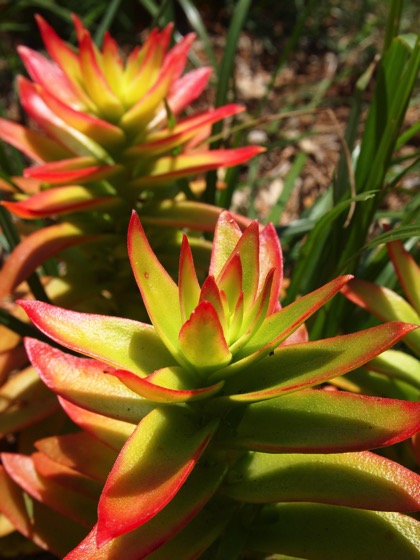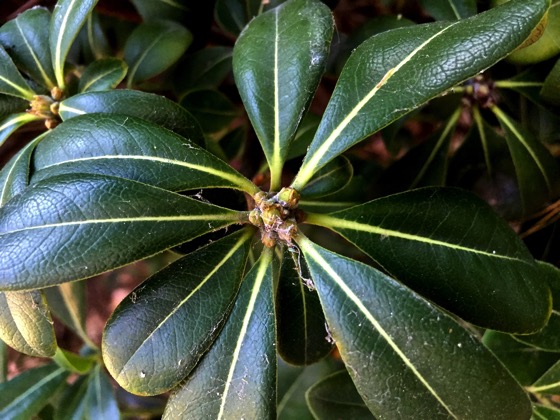In the natural world, flowers get all the attention and I have been guilty of perpetuating that bias here in my own blogs. That said, leaves are amazing, too, so in this series I will highlight the many forms of leaves available out there. — Douglas
Echeveria

These might not look like traditional leaves, but leaves they are — even if heavily modified to store water in this drought-tolerant plant. The extra waxy exterior of the leaves also help to limit loss of water through evaporation. I especially like the color variegation of these leaves – adding a lot of flair to what might otherwise be a bland-looking plant.
Echeveria is a large genus of flowering plants in the Crassulaceae family, native to semi-desert areas of Central America, Mexico and northwestern South America. The genus is named after the 18th century Mexican botanical artist Atanasio Echeverría y Godoy.Plants may be evergreen or deciduous. Flowers on short stalks (cymes) arise from compact rosettes of succulent fleshy, often brightly coloured leaves.[2] Species are polycarpic, meaning that they may flower and set seed many times over the course of their lifetimes. Often numerous offsets are produced, and are commonly known as “hen and chicks“, which can also refer to other genera, such as Sempervivum, that are significantly different from Echeveria. Many Echeveria species are popular as ornamental garden plants. They are drought-resistant, although they do better with regular deep watering and fertilizing. Most will tolerate shade and some frost, although hybrids tend to be less tolerant. Most lose their lower leaves in winter; as a result, after a few years, the plants lose their attractive, compact appearance and need to be re-rooted or propagated. In addition, if not removed, the shed leaves may decay, harboring fungus that can then infect the plant.— Wikipedia
More information on Echeveria:
Previously in Garden Leaves:

